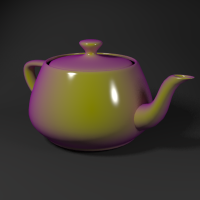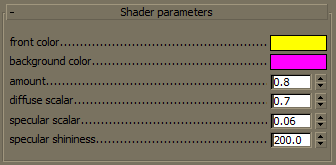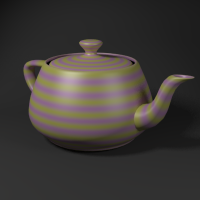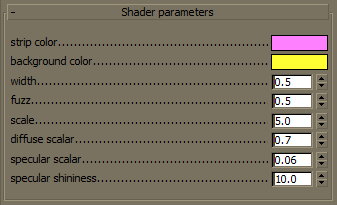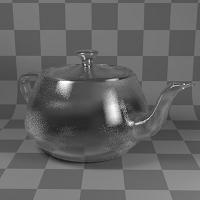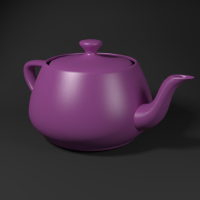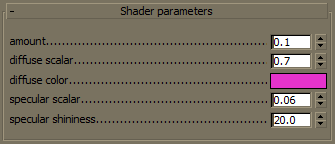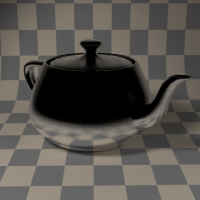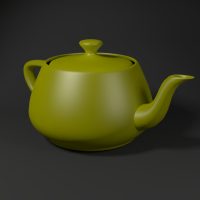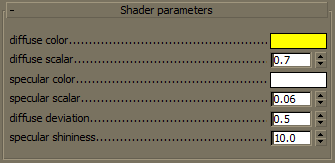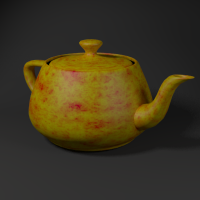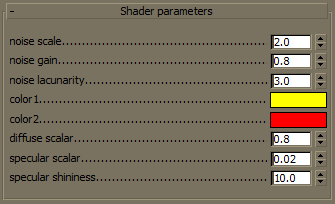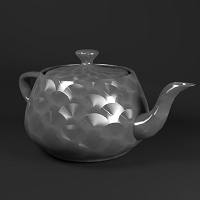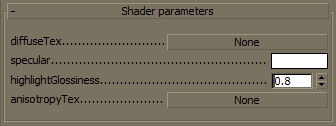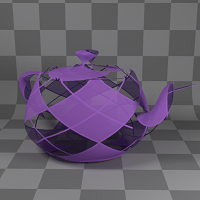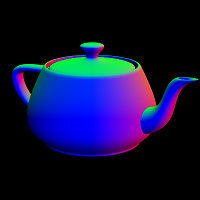vec3 normal = (gl_FrontFacing) ? vr_Normal : -vr_Normal;
vec3 position = vr_Position;
vec3 direction = vr_Direction;
float scaled_coord_t = fract(gl_TexCoord[0].t
* scale);
float fract1 = clamp(scaled_coord_t / fuzz, 0.0, 1.0);
float fract2
= clamp((scaled_coord_t - width) / fuzz, 0.0, 1.0);
fract1 *= (1.0
- fract2);
fract1 = smoothstep(0.0, 1.0, fract1);
vec4 diffuse_color = mix(strip_color,
background_color, fract1);
vec4 specular_color = vec4(1.0, 1.0, 1.0,
1.0);
vec4 diffuse = vec4(0.0, 0.0, 0.0, 1.0);
vec4 specular = vec4(0.0, 0.0, 0.0, 1.0);
vec4 raw_diffuse = vec4(vec3(diffuse_color) * diffuse_scalar, 1.0);
vec4 raw_specular = vec4(vec3(specular_color) * specular_scalar, 1.0);
vec4 temp = raw_diffuse
+ raw_specular;
float max_color_comp = max(max(temp.r,temp.g),temp.b);
if (max_color_comp > 1.0) {
raw_diffuse.rgb /= max_color_comp;
raw_specular.rgb /= max_color_comp;
}
vr_LightIterator light;
for(int i = 0; i < vr_NumLights; ++i) {
vr_evalLight(i, position, normal, light);
float cos_nl = clamp(light.dot_nl, 0.0, 1.0);
if (cos_nl > 0.0)
{
diffuse += vec4(vec3(cos_nl) * light.contribution, 0.0);
float specular_coeff
= phong_specular(light.direction, direction, normal, specular_shininess);
specular
+= vec4(vec3(specular_coeff * cos_nl) * light.contribution, 0.0);
}
}
diffuse *= raw_diffuse;
specular *= raw_specular;
vec3 gi_contribution = vr_irradiance(normal, 1.0);
diffuse += vec4(raw_diffuse.rgb * gi_contribution, 0.0);
gl_FragColor = diffuse + specular;
